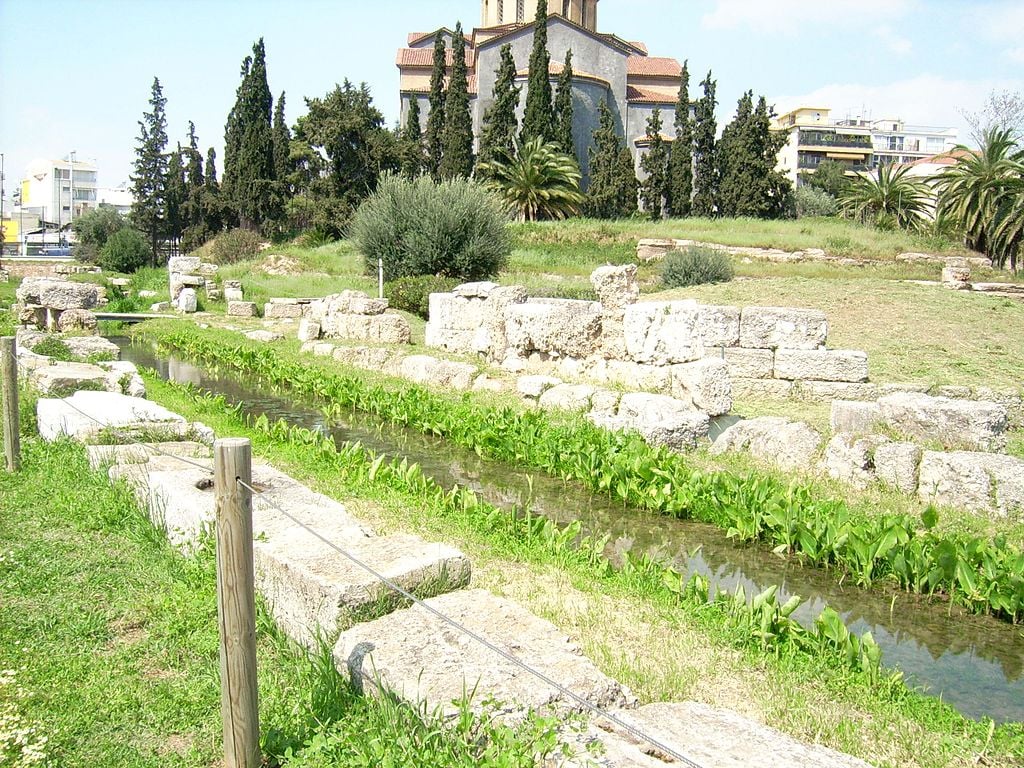
Eridanus is the lost river of ancient Athens that once ran from the foothills of Mount Lycabettus to Kerameikos, passing right by the Acropolis and through the Agora.
It was a small river that no longer exists, but its bed is still visible today. Eridanus got its name from the ‘deep-swirling’ river-god son of the Titans Oceanus and his sister-wife, Tethys. He was the father of Zeuxippe, mother of the Argonauts Butes and Eribotes by Teleon.
Its course has for the most part been covered since ancient times and was only visible outside the ancient walls in the district of Kerameikos.
Eridanus rediscovered during Athens metro works

The river was rediscovered during the excavations for the Athens Metro subway in the late 1990s, and its waters caused considerable technical problems at times.
Because of the Metro works, its seasonal flow through the Kerameikos Cemetery was disrupted, as the waters were apparently and inadvertently redirected to some new underground path.
The stream of the river, as it flows through Monastiraki Square, has been excavated. It had been covered with a brickwork tunnel since classical times, and the brickwork had been repaired at least twice in the imperial Roman and early Byzantine eras.
The brick tunnel now forms part of a small open-air museum at Monastiraki Square next to the metro station, and the waters of the Eridanus are from inside the tunnel.

Acropolis river poured its waters into Ilisos
Eridanus emptied its waters into another ancient river in Athens called Ilisos.
The Ilisos River ran outside the walls of Athens in antiquity. Plato himself wrote that the river actually formed one of the borders of the Athenian walls.
Its idyllic banks, with tall plane trees and beautiful pathways, were favored haunts of Socrates for his walks while he taught his students.
The temple of Pankrátēs, a local hero, was located there, giving its name to the modern suburb of Pagkrati. Ilisos was also considered a demi-god, the son of Poseidon and Demetra, and was worshipped in a sanctuary on the Ardittos Hill, next to the current Panathinaiko Stadium. This area was named Cynosarges in antiquity and the spring of Kallirrhóē was located there.
A few years ago, a Greek urban renewal firm called ”Anaplasis” was planning to uncover Ilisos.
The team’s idea is to create a narrow park along the banks of the Ilisos River which would connect the Acropolis with the Museum of Modern Art.
Largely covered now, flowing along in underground tunnels following Athens’ massive urban expansion of the early 1900s, the Ilisos is awaiting the moment when its waters will once again sparkle under Athenian skies.
See all the latest news from Greece and the world at Greekreporter.com. Contact our newsroom to report an update or send your story, photos and videos. Follow GR on Google News and subscribe here to our daily email!



